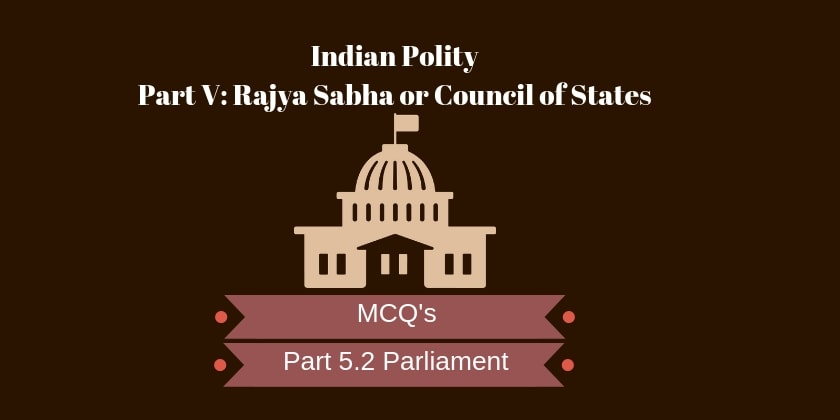Indian Polity: Rajya Sabha or Council of States
Rajya Sabha or Council of States is the upper house of our parliament. It does not have more than 250 members, 238 of which represent states and union territories and 12 members are nominated by the President. At present, the strength of Rajya Sabha is 245.
Most of the members of the House are indirectly elected by state and regional assemblies using single transferable votes, while the President can appoint 12 members for their contributions in art, literature, science and social services. Members sit for staggered posts for six years, in which one-third of the members-elect for every two years.
Qualifications to become a Rajya Sabha member:
1. Must be a citizen of India.
2. Minimum 30 years old.
3. Elected by the Legislative Assembly of States and Union territories.
4. Not be a proclaimed criminal.
5. Not hold any other office of profit under the Government of India.
6. Not be of unsound mind.
Twelve members are nominated by the President of India, having special knowledge in different fields like Arts and Science. However, they are not entitled to vote in the presidential election according to Article 55 of the Constitution.
1. Article 84: Constitution lays down the qualifications for membership of Rajya Sabha.
2. Article 89: The Chairman and Deputy Chairman of the Council of States.
3. Article 92: The Chairman or the Deputy Chairman not to preside while a resolution for his removal from office is under consideration
4. Article 97: Salaries and allowances of the Chairman and Deputy Chairman and the Speaker and Deputy Speaker.
5. Article 98: Secretariat of Parliament.
6. Article100: Voting in Houses, the power of Houses to act notwithstanding vacancies and quorum.
Read also:
Part 5.2 -Rajya Sabha MCQ’s
1. Which among the following can be said to be a part of the Parliament of India?
1. President
2. Lok Sabha
3. Rajya Sabha
4. Governors of states
A. only 2 and 3
B. only 1,2, and 3
C. only 4
D. All of the above
[toggle] Answer – B
Explanation: In the Constitution, Articles 79 to 122 define the roles and functions of the Parliament. [/toggle]
2. Bicameralism (a system of government in which legislative power is vested in two chambers – “upper house” and a “lower house”) in the Indian constitution was taken from the constitution of which country
A. Britain
B. US
C. France
D. Australia
[toggle] Answer – A [/toggle]
3. When was the Council of States named as Rajya Sabha in Hindi
A. 1 September 1957
B. 2 October 1960
C. 23 August 1954
D. 15 August 1950
[toggle] Answer – C [/toggle]
4. The joint session of the two Houses of Parliament was taken from the constitution of which country
A. Ireland
B. Australia
C. Britain
D. Canada
[toggle] Answer – B [/toggle]
5. Election of members of Rajya sabha was taken from the constitution of which country
A. Canada
B. Ireland
C. South Africa
D. Britain
[toggle] Answer – C [/toggle]
6. Who was the first Chairman of Rajya Sabha?
A. Dr. S. Radhakrishnan
B. Zakir Husain
C. S.V.Krishnamoorthy Rao
D. None of the above
[toggle] Answer – A [/toggle]
7. Which of the following Article is dealt with the composition of Council of States(Rajya Sabha and the manner of election of its members?
A. Article 80
B. Article 82
C. Article 81
D. Article 90
[toggle] Answer – A [/toggle]
8. The representatives from states in Rajya Sabha shall be elected by the
A. Chief Minister of the State
B. Elected members of the State Legislative Assembly
C. Governor of the State
C. President
[toggle] Answer – B [/toggle]
9. Who nominates 12 members in the Council of State or Rajya Sabha—
A. Chairman of Rajya Sabha
B. Deputy Chairman of Rajya Sabha
C. President of India
D. Prime Minister of India
[toggle] Answer – C [/toggle]
10. Members of Rajya Sabha are elected by which members—
A. Lok Sabha
B. Legislative Assembly
C. Council of State
D. Legislative Council
[toggle] Answer – B [/toggle]

